Planting and caring for honeysuckle in the Leningrad region
Honeysuckle is one of the most unpretentious plants, native to the Far East. Its edible and decorative varieties are popular. The former bear fruit with blue oblong berries with a sweet-sour taste and a high content of vitamin C. The latter produce a large number of large fragrant inflorescences that decorate the site, and bright, but poisonous berries.
Honeysuckle is grown not only in the southern regions and the Far East. Modern varieties have sufficient winter hardiness to grow in the central regions and in the Northwest. We will tell you about the nuances of planting and caring for different varieties of honeysuckle in the Leningrad Region below.
The content of the article
Honeysuckle varieties for the Leningrad region
Edible plant variety is bush... It bears fruit with oblong blue berries with a delicate, sweet and sour taste and fresh aroma. Berries are rich in vitamins and minerals. To get your daily vitamin C requirement, all you need to do is eat a handful of fresh honeysuckle.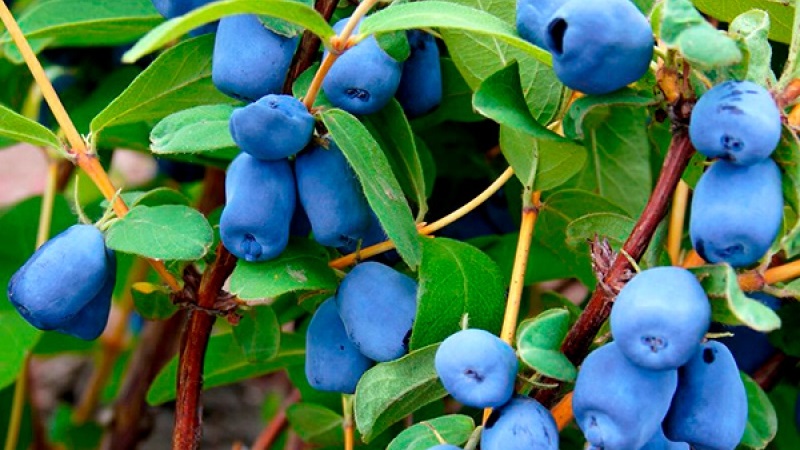
Ornamental honeysuckle is usually a liana, but bushy varieties of this plant are also found. It is appreciated for its large and delicate inflorescences, exuding a delicate sweetish aroma. During fruiting, round, yellow or orange berries appear to lie on the leaves. The fruits of ornamental honeysuckle are not eaten.
Both varieties of honeysuckle are native to the Far East. There they grow wild. Breeders have bred many varieties with increased resistance to cold snaps and other negative environmental factors, more abundant flowering, high yields and large fruits. Among them there are those that are ideal for the Leningrad region.
Edible
Edible honeysuckle ripens earlier than strawberries. The fruits have time to ripen even in the cool Leningrad region before frost. The main thing is to choose varieties that can survive the harsh winter.
Dessert
Shrub up to 1 m high with a compact but dense crown. The branches are long, up to 1.8 m, lowered to the ground. The mass of one fruit reaches 1 g, the total yield per bush is within 2-2.5 kg. The berries have a blue skin with a blue bloom and juicy, sweet, with a pronounced acidity pulp. The fruits ripen uncommonly, with difficulty they are separated from the stalk. Dessert is a medium-late ripening variety.
Pavlovskaya
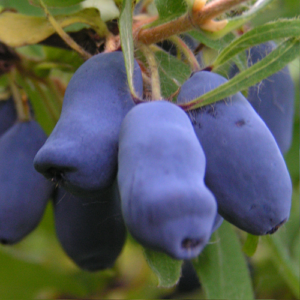
A bush with a thin crown reaches a height of 1.4 m. Berries weighing up to 1.25 g have a dark blue skin with a bluish bloom. The fruit tastes sweet and sour, with a weak aroma. The shape is oval, with a pointed tip. The pulp is dense, does not wrinkle during transportation. The variety is mid-season. About 2 kg of yield is obtained from one bush.
Nymph
The bush is medium-sized, with a dense and spreading crown. The fruits are large, weighing up to 1.2 g, have a fusiform, elongated shape. Juicy, sweet taste and rich aroma. The skin color is blue, there is a dense layer of gray waxy bloom on it. The variety is mid-season. On average, 2 kg of fruits are harvested from one bush.
Moraine
A medium-sized bush with a slightly spreading crown. The berries have an elongated pitcher-like shape. The weight of each fruit reaches 1.1 g. The skin is blue, with a dense blue waxy bloom. The taste is sweet and sour, with a light berry aroma.Up to 2 kg of harvest is harvested from the bush. Ripening dates are early.
Viola
Vigorous plant with a dense crown. It has dark blue berries with a waxy bloom of an oval-elongated shape. The mass of one berry does not exceed 1 g. The taste of the fruits is sweet and sour, with a slight bitterness. This is a mid-season variety. Productivity - up to 4 kg of berries from a bush.
It is interesting:
Stably productive variety of honeysuckle "Iziuminka" from Russian breeders
Decorative
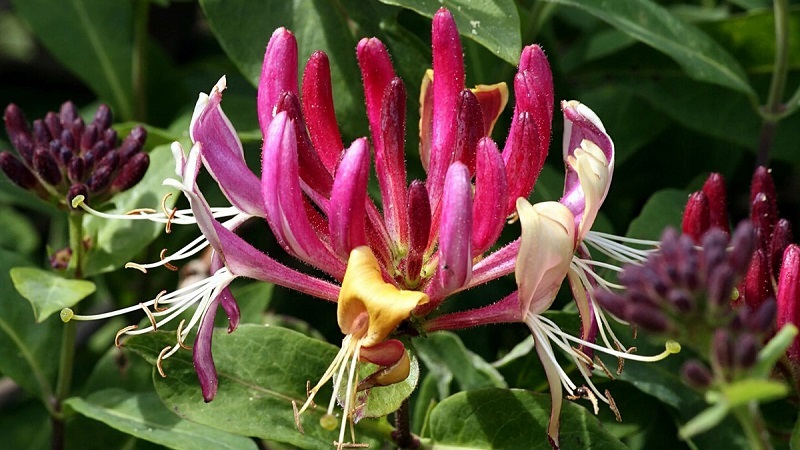
Ornamental honeysuckle is also frost-resistant. The most popular varieties are:
- Honeysuckle;
- Gray honeysuckle;
- Adorable;
- Bedspread;
- Maksimovich.
Planting honeysuckle in the Leningrad region
Despite the cool climate of the Leningrad Region, honeysuckle is able to grow outdoors in such conditions. If it is not properly planted, it may not have enough sun, another problem is high humidity at the roots. In both cases, the plant begins to ache and gives poor yields. To prevent this from happening, it is important to choose the right landing site.
When to plant
In the Leningrad Region, the growing season of honeysuckle begins in late March - early April. By this time, the soil usually has not yet thawed, so the spring planting of the berry is problematic.
The best time to plant honeysuckle is autumn. The works are carried out from the beginning of September to October.
Note! Honeysuckle is a cross-pollinated plant. In order for it to bear fruit, you will have to plant several bushes of different varieties on the site.
Selection and preparation of planting material
Honeysuckle usually propagated by cuttings, dividing the bush or layering. The generative method of breeding the berry is not recommended, since a plant that has grown from a seed does not retain its maternal characteristics.
Ready-made seedlings are grown independently or bought in nurseries and on the market. In the second case, it is important to know the signs of high-quality planting material:
- The root system must be developed, have many large and small roots. Flexible and resilient to the touch, not dry. It is better if the root system is of a closed type (in a coma of earth).
- Age and size. The ideal option is 2-year-old seedlings with 2-3 branches. The optimal height is 30-40 cm.
- The branches are resilient and flexible. Brittle and dry specimens are discarded. The shoots should be free of damage, stains and other signs of damage diseases and pests. Flaky bark is a feature of honeysuckle, such seedlings can be taken.
- Buds are present on every branch.
If the seedling has a closed root system, it is not cultivated before planting. Growth stimulation and disinfection are carried out directly in the well.
Attention! Honeysuckle seedlings, unlike other fruit and berry bushes, are not pruned before planting. Such a procedure will slow down its development.
Seedlings with an open root system are prepared:
- Examine the root system and branches. All dry roots, limp and dry shoots are removed.
- The roots are disinfected: they are soaked in a light pink solution of potassium permanganate or "Fitosporin".
- Stimulate root formation - use special drugs such as "Kornevin".
Seat selection
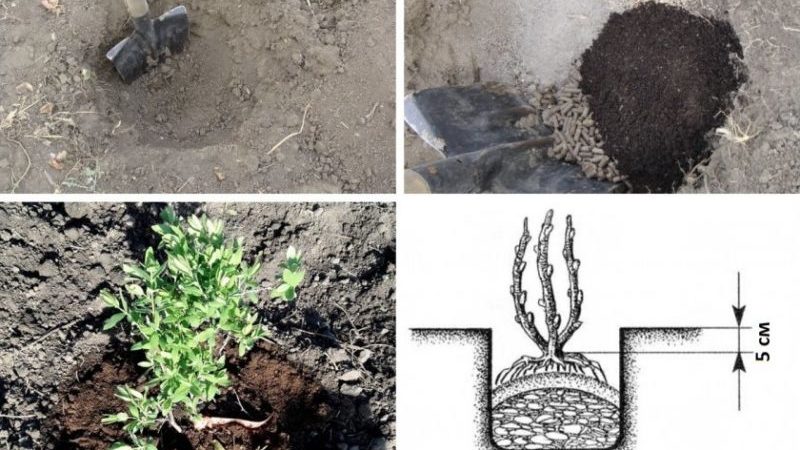
Cloudy weather is often observed in the Leningrad region. Therefore, light-loving honeysuckle is planted in the most illuminated areas of the garden, half-shaded places are not suitable.
The second important condition: in the place for planting honeysuckle, groundwater should not be too close to the surface. On swampy and clayey soils, the plant will be weak, and the yield will be low.
Light, fertile soil works best for honeysuckle. If possible, loam is chosen.
They begin to prepare the soil no later than 3 weeks before the seedlings take root. It is cleared of weeds and plant debris, dug up and leveled with a rake. The day before planting, the soil is watered with a hot solution prepared from a bucket of water and 1 tbsp. l. copper sulfate.
For planting honeysuckle in the Leningrad region, a standard scheme is used. Plants are planted at a distance of 1-1.5 m from each other. A space of 2-3 m is left between the rows.
Dig holes 50 cm deep and 60 cm wide. The soil removed from the recess is mixed in equal proportions with humus or rotted manure. For this amount of land, take 30 g of superphosphate and 20 g of potassium salt.
Landing algorithm
Step-by-step instructions for planting honeysuckle:
- In the hole, a mound is formed from a nutritious soil mixture.
- The seedling is placed in a hole in the center of the earthen slide.
- The roots of the seedling are evenly distributed around the mound.
- The hole is covered with the remains of fertile soil, deepening the root collar by 3 cm.
- The soil around the plant is compacted.
- Each seedling is watered with 3 buckets of water, several crystals of potassium permanganate are added to one of them.
- The soil around the honeysuckle is mulched with peat, rotted straw or compost.
When planting seedlings with a closed root system, an earthen mound in the hole is not formed. The plant is planted with a lump of earth.
Features of caring for honeysuckle in the Leningrad region
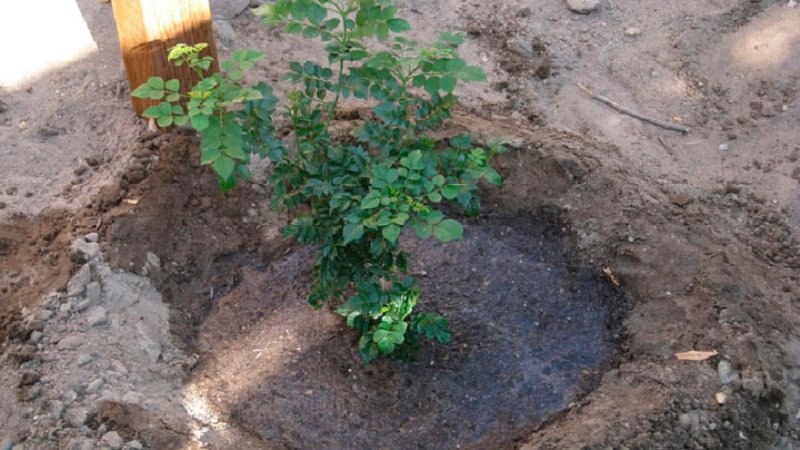
Honeysuckle is an undemanding plant to care for. Even a novice gardener has no problems with him. It is enough to follow the basic rules of cultivation, and the plant will give stable yields.
Note! In the Leningrad region, honeysuckle is less likely than in the southern regions to suffer from diseases characteristic of this culture. This is due to the fact that at lower temperatures fungi develop worse.
Watering and feeding

It often rains in the Leningrad Region, cloudy weather is observed even in summer. Usually, the shrub is watered no more than 5 times for the entire season. Do this if the soil becomes dry. It is especially important to monitor the moisture content of the soil during flowering, since the plant sheds inflorescences in overdried soil. It is not recommended to water the honeysuckle during fruiting, this negatively affects the taste of the berries.
For watering, use settled water at room temperature in a bucket for each bush.
Water the plant early in the morning or at sunset. During times of high solar activity, watering leads to burns on the plant.
Note! If the summer is dry, the amount of watering is increased.
It is useful to periodically spray the crown of the plant with water. For this, warm, settled water is also used. The procedure is performed when the sun is inactive. When the honeysuckle blooms, the spraying is stopped.
After each irrigation and precipitation, the soil is loosened to destroy the earthen crust, which impairs the root air exchange and promotes stagnation of water.
The plant starts feeding 3 years after planting.
Use the following scheme:
- The first top dressing is applied in the spring. 10 kg of rotted manure are buried under the bush and a bucket of water is poured in which 2 tbsp is dissolved. l. urea.
- The second time fertilizers are used when buds and berries appear. A product made from 1 kg of manure, 1 tbsp. Is poured under the bush. ash and 10 liters of water.
- The third time the plant is fed in the fall. Near the trunk, 100 g of ash, 5 kg of compost and 40 g of superphosphate are buried.
Dry fertilizers are applied at any time. After the procedure, the soil is moistened.
Water the honeysuckle before using liquid dressings. Fertilize in the morning or evening.
Pruning
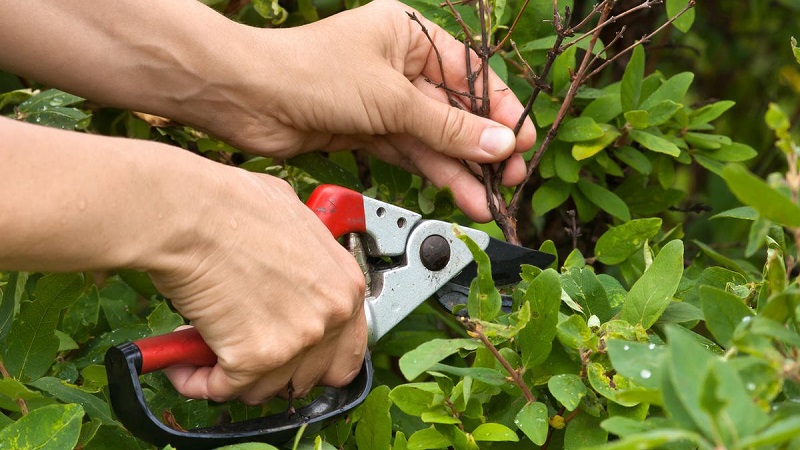
Honeysuckle pruning is carried out in the autumn. There are three types of this procedure:
- Formative. They start from the second year of life. All weak shoots and root growth are cut off. Each time, five young shoots are left.
- Sanitary. The plant is examined for damage by diseases and pests. All damaged, frozen and dry branches are cut off.
- Anti-aging. It is carried out once every 10 years. In the process, all old branches are removed, leaving only the young ones.
Pruning is carried out in dry weather when precipitation is not expected. This is done in the morning or evening. Slices are smeared with garden pitch.
Preparing for winter
In the Leningrad Region, special attention is paid to preparing for winter, because this time of year is the most dangerous for the plant.
Preparatory procedures:
- Cleaning. Every autumn, fallen leaves are collected around the bush, weeds are pulled out and other plant debris is removed. They carry diseases, pests hibernate in them. The collected garbage is incinerated.
- The bush is tied with a rope so that the snowdrifts do not break the branches.
- Honeysuckle is mulched as high as possible with rotted straw or peat. Some gardeners also use spunbond.
There is no need to care for honeysuckle during winter. The plant is only periodically covered with snow.
When honeysuckle ripens in the Leningrad region
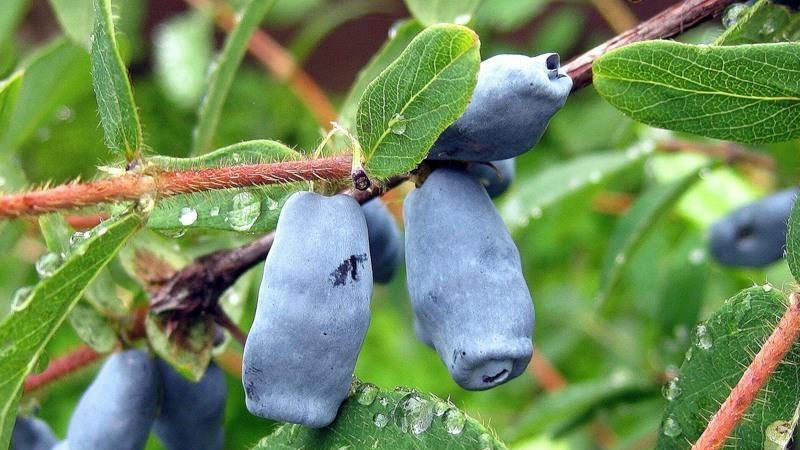
The ripening time of honeysuckle in the Leningrad region depends on the variety. Early varieties can ripen as early as early June. Mid-season honeysuckle yields in the middle of this month. Late-ripening honeysuckle berries are harvested in early July.
Ripe berries are plucked from the bush along with the stalk. They are collected in dry sunny weather during the day.
It is interesting! Honeysuckle berries from the Leningrad Region contain more sugar and vitamin C than fruits harvested in the Far East.
Conclusion
Honeysuckle is a winter-hardy plant that can grow and bear fruit in the Leningrad region. She is undemanding to care and does not need constant attention of the gardener. Decorative and edible varieties become garden decoration.
Grooming in the Leningrad region is not very different from growing in warmer regions. The main thing is to choose the most sunlit area in the garden and pay enough attention to preparing for winter.